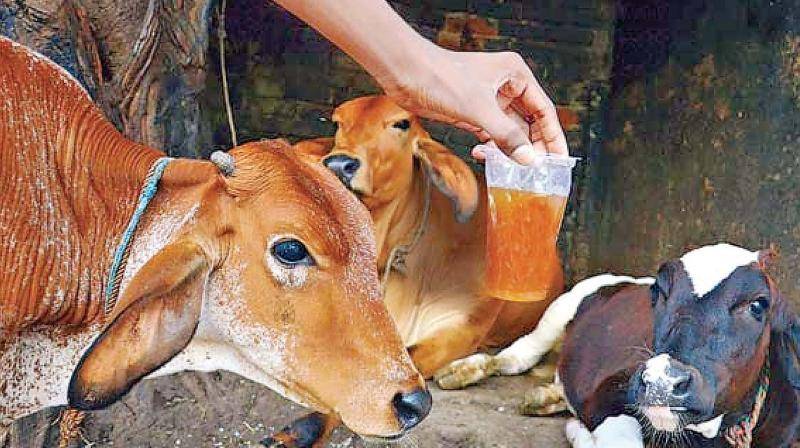
Cow urine is a minor fount of research in India for its medicinal benefits. It may also contribute to global warming. The urine from the ruminant is a source of nitrous oxide emissions (N2O). It is a gas that is 300 times more powerful than carbon dioxide.
A study conducted in Colombia, Argentina, Brazil, Nicaragua, Trinidad and Tobago suggested when cow urine is used in degraded pastures, which are also seen in vast tracts of land in India, N2O emissions are tripled. This study has also been published in the latest edition of the peer-reviewed Scientific Reports.
Cattle and livestock are important source of methane, a greenhouse gas. However, the role of cow urine is less understood. The study was conducted by the International Centre for Tropical Agriculture (CIAT), Colombia in which the researchers collected urine from cattle and spilled 500 ml samples on paired cattle fields known as degraded or healthy. It was determined by vegetation coverage. In six of the seven test sites, degraded pastures emitted significantly more N2O that was sometimes up to three times as much.
Dung and urine are commonly mixed together for manure in Indian fields. India also has the world’s largest livestock population and many tracts of degraded land. The findings may have a bearing on nitrogen emissions from Indian fields.

According to 2012 satellite study by ISRO, about 30% of India’s geographical area is degraded. There has been an increase of 1.87 million hectares undergoing land degradation/desertification between 2011-13 and 2003-05.
However, states that have increased degradation are Delhi, Tripura, Nagaland, Himachal Pradesh and Mizoram (11.03%-4.34%). The Energy Resources Institute (TERI), in a 2018 study commissioned by the Union Environment Ministry, “conservatively appraised” the costs of land degradation at $48.8 billion, or 2.5% of India’s GDP in 2014/15.
“According to this study, degraded pastures not only affect food security and the livelihood of farmers today, but affect the livelihood of future farmers because they emit more gases that cause global warming,” said Ngonidzashe Chirinda, a CIAT researcher and the study’s lead author.
Degraded grasslands emitted more N2O than healthy pastures because the vegetation in the latter took up some of the reactive nitrogen compounds and only the leftovers were emitted. An expert in India said, India had estimates for dung and urine production per cow or buffalo or other livestock animals as well as their overall estimates for their populations as per 2012 livestock census, but the exact contribution of cow urine to the total nitrous oxide emission from India are not estimated precisely.
Source- Hindu
















